Katarina Batina and Nick Simmons are 2012 undergraduate alum of the UW Visual Communication Design program who are designers at Artsy. Artsy features the world’s leading galleries, museum collections, foundations, artist estates, art fairs, and benefit auctions, all in one place. Their growing database of more than 350,000 images of art, architecture, and design spans historical, modern and contemporary works, and includes the largest online database of contemporary art. Artsy is used by art lovers, museum-goers, patrons, collectors, students and educators to discover, learn about, and collect art.
Art and Design at Artsy, NYC
Artsy
Katarina Batina + Nick Simmons
Sep 23 2015
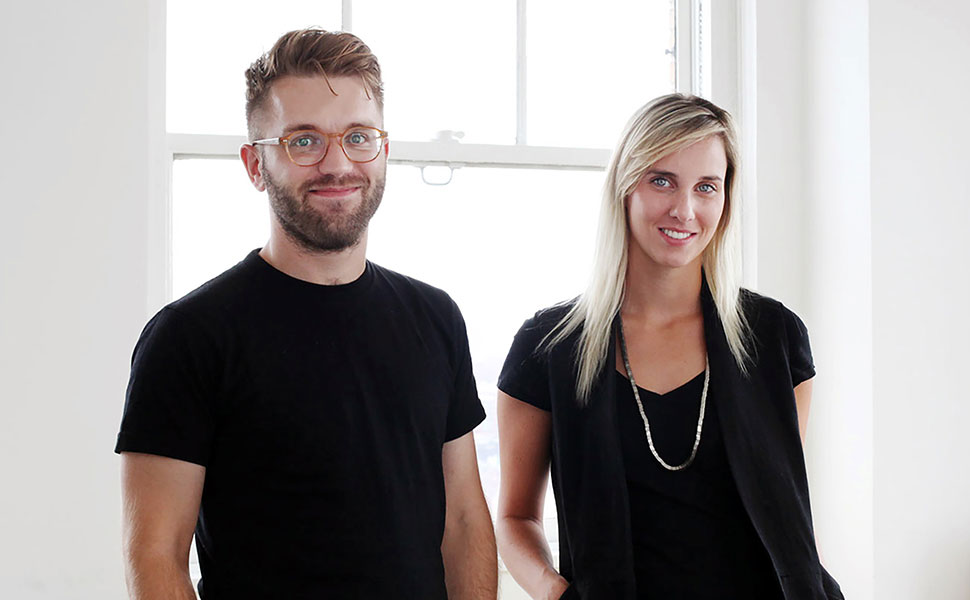
Part One
It Began with a Startup
Called “Artusi”

How did you get your job at Artsy?
Katarina: In late May of my senior year, I made a trip out to New York to look for work. Another UW Design alum—Felix Wang (B. Design in VCD, 2012)—told me about this startup called “Artusi.” It seemed interesting, so I arranged to meet with the head of product, Robert Lenne. But when I got there, I realized that it wasn’t “Artusi”—it was “Artsy.” I was so excited because I had actually been a beta user of their site, and I respected the company a lot—I was really inspired by their visual design and progressive approach to interaction design. I just didn’t realize that Artsy was based in New York. Robert and I had an informal chat that day, and then I came back later for a more formal interview later. It actually wasn’t very “formal”—I was sitting on a very small couch, nestled between the CEO and Robert, showing them my portfolio on my laptop, which was balanced on my lap! I was lucky enough to get a job offer, but I had to defer, because I couldn’t make the move to New York at that time. But I came back out to New York again later that year, and asked to have that offer back, because I was really unhappy where I was working. I was ready to move to the city.
Nick: I pretty much got on board through Katarina. I was finishing an internship at Method in New York, and I actually had a full-time job offer from them. But Katarina suggested that I come to Artsy, and when I met the head of design, it seemed like a really cool place to jump on board.

What is a typical day at Artsy like?
Katarina: There’s no fixed times to be here. Typically, I start my day around 10am. We have a regular design meeting three days a week from 10:30am to noon. This is an open period for the design team to get together and have a pretty traditional critique—the team is still relatively small, so that format still works. I try to get home to make dinner at 6 or 6:30pm. Sometimes I do stay late, but there isn’t this pressure to do so. What is most important to the team is getting your work done at high quality. If that means you need to run some errands in the middle of your work day, no problem, if you need to work from home or remote from another location, no issue. Artsy isn’t in a large complex like Facebook or Google, where there are more amenities on-site. So in general, everyone accepts that people will step out to do whatever it is they need to do.
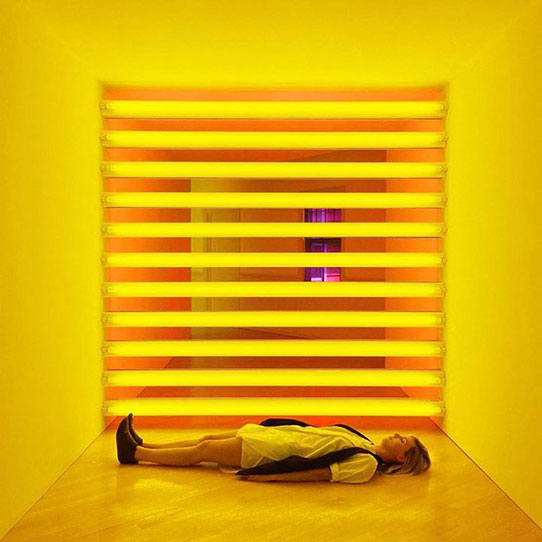
Nick: In terms of the actual work during the day, that varies quite a bit. It depends on where we are in the product design cycle. For example, let’s say that we decide that we want to build a new feature. We’ll have a meeting to determine our goals—we’ll take stock of what’s going on, talk about what’s failing, and decide what we want to improve. After that, the designer will go off by themselves with pen and paper, and sketch out rough flows. Then the designer will come back, and we’ll have a design review to discuss the work, and maybe brainstorm together. The cycle repeats—the designer will go back and revise the work, taking it through varying levels of fidelity—from wireframes to a finished visual design and interaction design, with more design reviews after each stage. Eventually all the flows get worked out, and then you begin working with an engineer. The designer specs it out as much as possible for the engineer in advance, but you and the engineer need to work together to bring it to fruition..
The Product Design Cycle
"The Design Reviews are completely open—anybody in the company can come. There's a natural chemistry between the designers, the business leads and the data analysts." —Katarina

Can you describe the design review process a bit more?
Katarina: The design reviews are completely open—anybody in the company can come. There’s a natural alchemy between the designers, the business leads and the data analysts. It usually isn’t contentious—if we’re all fighting, that usually means something is wrong. Hopefully, instead of it being totally subjective, we can rely on data to help guide us to a strong solution. Someone on the data analytics team might say, “We ran a test just like this last year, so we can make some assumptions about how to do this.”
Nick: Robert is really skilled at facilitating conversations that help us collectively rally around a particular decision. He’s very good at keeping things on track. At other places that I’ve worked, there can be lots of debate and back and forth. Everyone gets worn out, and afterwards, no one is really sure what decisions were made. Robert does a really good job of summing up at the discussion—he’ll say, “So, we’re going to try these two routes with mockups, and then we’ll bring it back to the next meeting and make a final decision.”
Artsy on Tablet
Artsy is developing a new UI for live bidding, so that collectors can place bids from web, tablet and mobile. Collectors can also use Artsy's Live Auction software to browse lots from upcoming live sales.

Part Two
Going Deeper into
Product Design
It’s a huge challenge to connect the online audience to something that is happening in real time. If done right, it could change the way people interact with live auctions in a really exciting way.
What are some of your favorite projects that you have done at Artsy?
Katarina: My favorite project is probably the one I am working on right now. We’re developing a brand new feature across all our platforms to facilitate online live auctions. This means that people around the world will be able to participate an auction taking place anywhere, right from their phone—without ever having to step foot onto the actual auction house floor. The project involves developing a new UI for live bidding on our website and iPhone app. We also have to develop new administrative tools for auction houses, so they can report back to the online bidders about what is happening on the auction room floor. This is my favorite project because it’s new area of opportunity for Artsy. It’s a huge challenge to connect the online audience to something that is happening in real time. If done right, it could change the way people interact with live auctions in a really exciting way.
Nick: My favorite project is one that is still ongoing—we’re working on a local show guide that helps people find gallery shows that they will love. It’s part of Artsy’s goal to help connect people to art in the real world—not just online. In a major art hub like New York, there are a vast number of art shows, and it’s often hard to find all the hottest show openings—especially the small shows that are under the radar. You might miss a show by one of your favorite artists. So, we are currently in the wire framing stage of creating a stand-alone app that leverages Artsy’s existing database of shows and high-quality images to create a better local show guide experience. This has been a great project because it ties together quite a lot of fun problems— including mapping locations, providing suggestions based on a user’s profile, and integration of social media. It’s not at all constrained by commercial interests, so we are free to make something that completely serves the user.
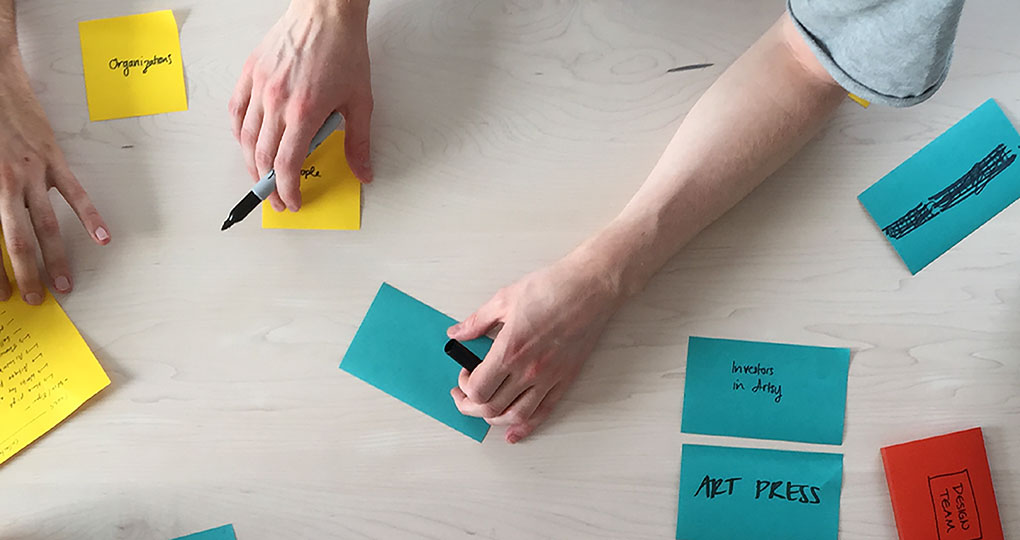
How do you feel working in-house at a company like Artsy, in comparison to your prior experience at design consultancies?
Nick: Well, you’re going to be able to go a lot deeper into the product that you’re working on when you are part of a company. At most consultancies, you work on things that get handed back off to the client. At that point, there’s varying levels of seeing your work actually come to fruition. Some of the things you hand off take six months or even a year to get made—and some of them never get made. Here, I have a longer-term relationship with the product. There’s something really cool that comes with designing and refining a product over time, and really knowing the product based on being right there.
There’s something really cool that comes with designing and refining a product over time, and really knowing the product based on being right there.
Katarina: Working as a product designer in house, you get to experience the full project cycle from beginning to end—iterating on design solutions, testing them, developing the final product, testing that product with users, and finally being able to improve the product from what you’ve learned. In some consultancies, you don’t get to experience the complete cycle—mostly because it would be too expensive for clients to keep a consultant on through several rounds of design iterations.
Iterating on Design Solutions
Katarina with Alexander Fabry, Director of Product Operations and Analytics at Artsy.
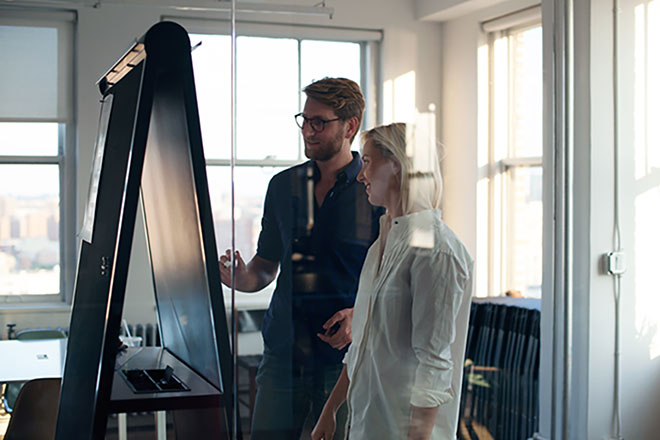
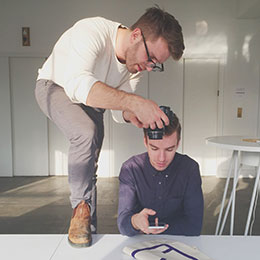
Do you find it at all limiting to work in-house—as opposed to a consultancy where you would have many different clients?
Katarina: As a student, I did worry about getting tied down into one thing. But at Artsy, there are many users to consider—you could definitely switch up the kind of user that you’re serving. Or, you could decide that you want to work more on certain products, or change the role that you have. I’m the lead designer on all auction products across platforms, but also operate as a product lead and product manager on the Artsy iOS app. Nick is on the Artsy.net web team, and is also a communication designer—he works on all the shows, across all platforms. To me, it’s never a dull day. Because Artsy is a startup, you’re asked to do a lot of different things—you can grow in different directions. I can brainstorm on projects with other designers; there’s candidates for hiring to evaluate; and I work on project management, sometimes dive into our data to try to answer certain questions I have about how people use our app. Needless to say, it keeps things interesting and it gives you different ways to operate on a day-to-day basis.
Nick: I started out with the assumption that I would be doing mostly visual stuff—mostly communication materials. But I’ve definitely moved into product design as well, which is great, because that’s where some of the most interesting problems are. There are definitely times where you can get a little burned out on the branding system—or find the limits of the branding system frustrating. But at Artsy there’s enough auxiliary stuff—a variety of communication materials, like invites to events or print stuff where you can push the limits more, or bring in different brand components. Also, sometimes to get my branding fix, I’ll work on a personal project or side project. I’ve taken up drawing, and I do carving and that sort of stuff. I’m also working with Johnny Sikov (B. Design in Visual Communication Design, 2012) and Tom Conroy (exchange student at UW Design, 2011)—we’re working on an iPhone game.
Part Three
Looking for
“That Sort of Skepticism”
There’s definitely things I learned at UW that I’m using every day here.
Do you think UW Design adequately prepared you for your current job at Artsy?
Katarina: I do. The education we got there was so rooted in a basic process that translates directly to what we do today. That design process really got drilled into our minds—beyond the specifics of making a branding system or building a typeface.
Nick: Absolutely. There’s definitely things I learned at UW that I’m using every day here. I think a lot of our education came out of UW critiques. In the critique process, you develop almost a kind of joy in getting rid of bad ideas—even if it’s your idea!
Katarina: Totally. The greatest joy I get from critique is not “Yeah, that looks cool.” It’s when our design lead has a furrowed brow, and he’s at a loss for words. I know that something is wrong with the design, but he can’t figure it out. When I finally figure out what it is—why something is bad—it can be so satisfying. We know what it is wrong and can move on. I think that in school you’re hoping to get out of a critique with nothing to change. Or you want a pat on the back. But really that’s not where the sweet sauce is. It’s in figuring out how to take it to the next level.
Nick: We really look for that sort of thinking, that sort of skepticism. When we’ve interviewed people, you can kind of tell when someone has that, and when they don’t.
Katarina: Yes. That foundation and thinking has to be in place. Now that I’m in a position where I’m starting to interview designers who are considering working here, it’s one of the first things you start to test for. Sometimes I see really polished portfolios—very shiny design mockups—but when you start talking to them, you realize that there’s nothing there.

What does Artsy look for in an intern or a new hire?
Katarina: We had an intern this summer, and I was her mentor. She was great—a senior from Carnegie Mellon who had a previous internship at Google—she is graduating in December. She had a lot of fundamentals under her belt and was able to really hit the ground running. The size of our team is small, and everybody is spread a little thin. At this point in time, I think this is the right model for someone to be successful at an internship here. You have to be pretty far along in your design education, and it may help to have a previous internship at another company.
Everyone knows that there’s constraints to projects; everyone knows there’s timelines. You don’t want to draw attention to weaknesses, but acknowledging loose ends is honest and realistic.
Nick: This is a little specific—but I think it’s important. During interviews, you’re going to have to show work. If you have an unresolved piece of a project, or a part that isn’t well thought out, it’s always better to acknowledge that and say what you would have done differently. The worst thing in an interview is when someone is trying to skirt around a weak area. You say, “What happened here?”—and then, they panic. Look, everyone knows that there’s constraints to projects; everyone knows there’s timelines. You don’t want to draw attention to weaknesses, but acknowledging loose ends is honest and realistic. It shows you can think.
Katarina: People also know that you’re a student. The worst situation is to pretend “I’ve got it all figured out.”

What career advice do you have for current UW Design students? Is there anything that you wish someone had told you while you were still in school?
Katarina: I was too stressed! My body would hurt because I was so stressed out about my future. I would say this: If design school is sitting well with you—if there’s some joy or peacefulness in the work you’re doing, everything else is going to be fine. I think there is such a diverse set of opportunities for designers today that there’s really no need to worry. And most importantly, try to enjoy yourself. Now I look back, and some days I really wasn’t enjoying myself, and I really should have. It was a sweet deal, you were in class three hours a day. There’s no reason why anybody should have to stay up all night—there’s so many hours in the day.
Nick: I shudder when I think about some of those all-nighters I pulled. I think it would be different if I were at a consultancy, because sometimes it’s like, “Hey we’re presenting to the client tomorrow.” But we rarely have crazy deadlines, so I get to leave at 6:30, and not think about design for a little bit, that’s really nice. And there really is something nice now…you can diversify your interests…
Katarina: You can become a complete human.
